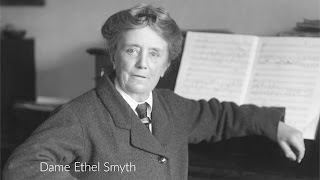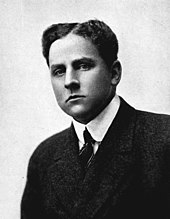Ludwig van Beethoven, Jean Sibelius,
Wolfgang Amadeus Mozart, JS Bach, Frederic Chopin, Anton Bruckner, Robert
Schumann, Giacomo Puccini, Giuseppe Verdi, Johannes Brahms, Luigi Boccherini,
Sergei Rachmaninoff, Hector Berlioz, and Richard Wagner. What do all of these composers have in
common? First, they are all men and
second, they have statues of their likeness in public squares across Europe and
some in the United States.
Chris Wiley, of London, England, recently posted on Facebook that a statue of composer/suffragette Dame Ethel Smyth (1858-1944) had been unveiled in her home town of Woking, England. The unveiling, appropriately, was held on International Women’s Day, March 8th.
Dame Ethel Smyth’s legacy as a
composer and suffragette is exemplary for those of us who have come after
her. She studied at the Leipzig
Conservatory. She met Clara Schumann and
Johannes Brahms. She composed
instrumental works, choral pieces, a Mass in D and six operas one of which, “Der
Wald,” was performed at the Metropolitan Opera.
There are numerous recordings available
that reveal the brilliance of Dame Ethel Smyth’s music.
For two years beginning in 1910, she gave up composing to join the Women’s Social and Political Union which advocated for women’s rights. She wrote “The March for Women” which became the movement’s anthem. During one particular contentious march for women’s rights, Smyth and 100 other women were arrested and served two months in prison. Suffragettes marched and sang her anthem outside the prison. Smyth leaned out of her prison window and conducted her colleagues using a toothbrush!
Reading about Dame Ethel Smyth’s statue, I wondered if any other women composers had been honored with the same. Research found that Hildegard von Bingen (1098-1179), Wilhelmine von Bayreuth (1709-1758), a contemporary of JS Bach, and Clara Schumann (1819-1896), wife of Robert Schumann, have statues in town squares. Only three women composers?
There are hundreds of women composers, whose renown and contribution to the world of music make them candidates for a statue in their hometowns. They are role models of discipline. They stood up for the right to be recognized as a composer in a man’s world. These women wrote music of the highest quality only to be turned away by publishing companies and performing organizations because they were women. Many were suffragettes, wives, mothers and business women striving to lay a path for women in the future. They accomplished that without recognition and fanfare.
What an idea – statues
of women composers!!









